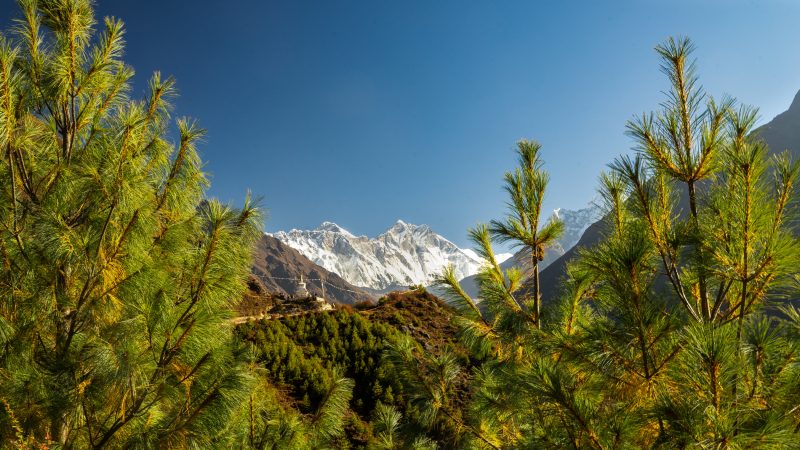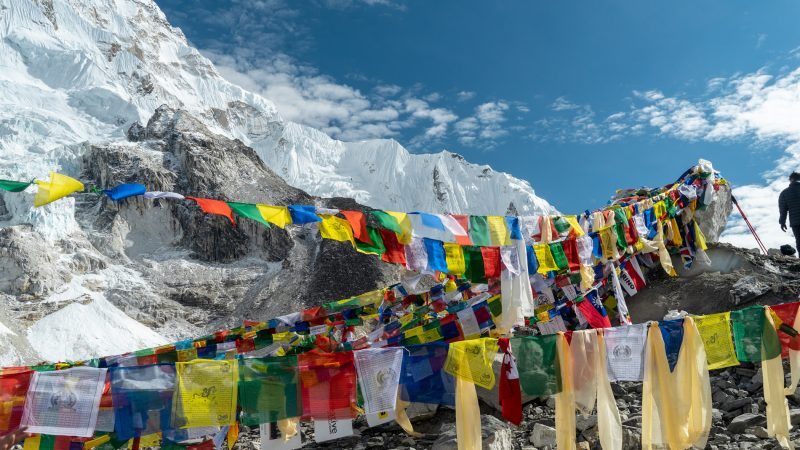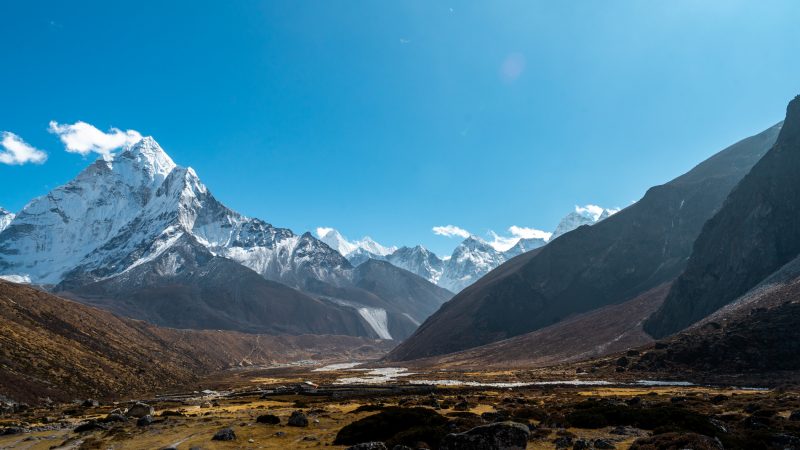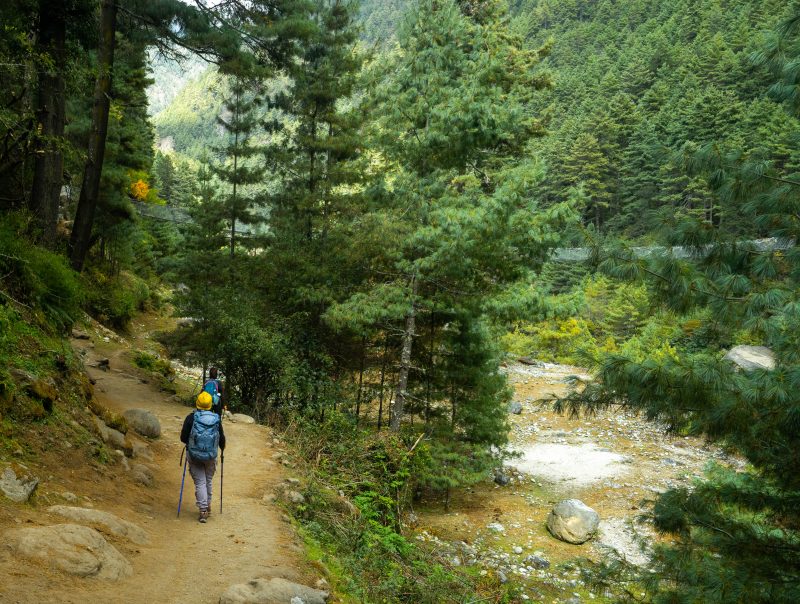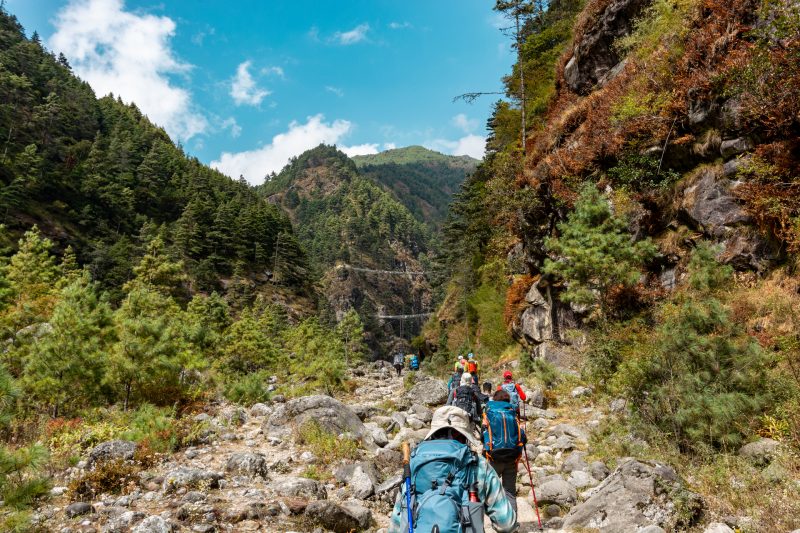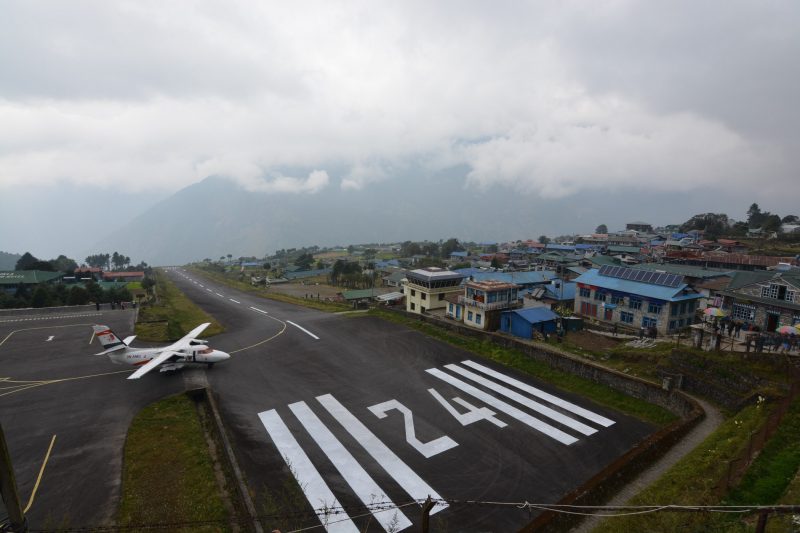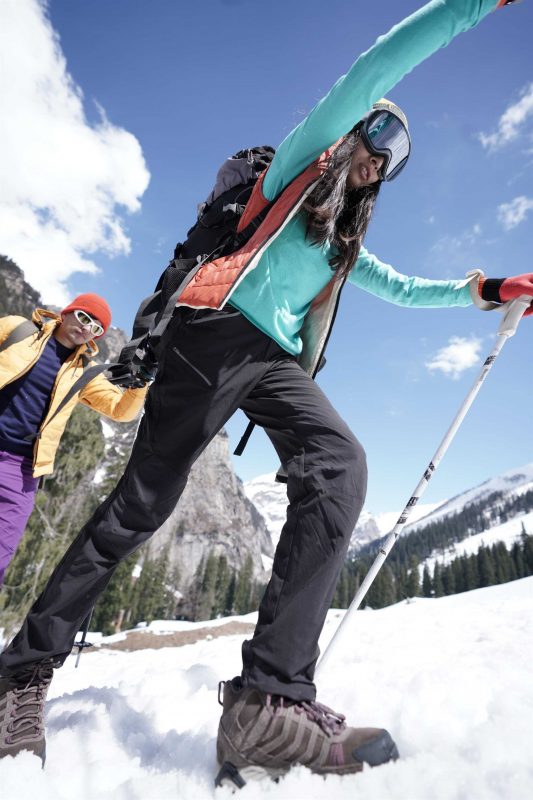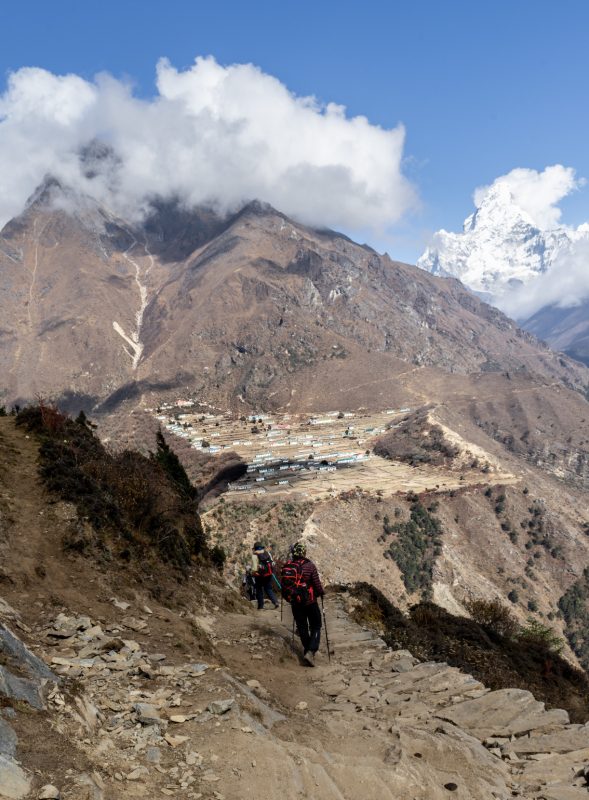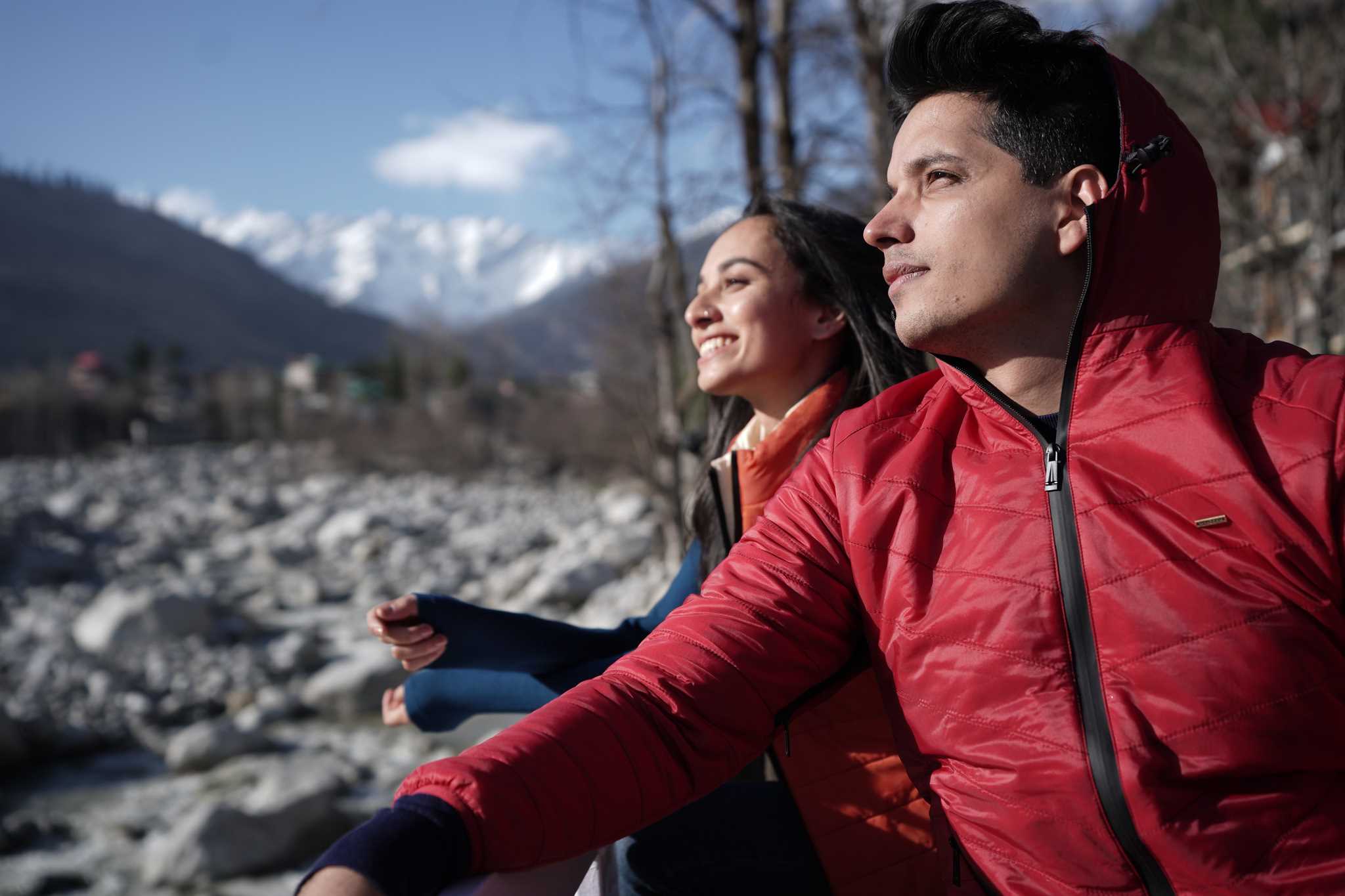
This is a detailed guide on the Everest Base Camp trek costs, packing list, and travel tips with a suggested itinerary, and tour recommendations.
“Mountains are calling and I must go!”
There are no better words to describe the magnetic pull mountains have always had towards adventure lovers. There is something about mountains that has always fascinated the explorers – be it the snow-capped valleys, the fresh, lush grasslands, the majestic views, or the peace that only mountains can provide. Travelers have found ways to enjoy this unique experience the mountains have to offer through different activities like trekking, camping, hiking, and many more.
With borders opening up and the internet and social media painting beautiful pictures of the mountaineering stories, there has been a significant increase in the number of travelers who try out trekking and hiking to mesmerizing mountains and trails.
One such trekking trail that has become the dearest choice of many climbers is the Everest Base Camp Trek. When Tenzing Norgay and Sir Edmund Hillary conquered Mt Everest in 1953, hikers around the world got another favorite trekking destination. Of course, how can it not be a favorite, right?!
We are talking about the base camp trek to the highest mountain in the world also known as the steps to heaven. If this excites you then you are at the right place.
We are going to share with you the ultimate guide for Everest Base Camp Trek (also known as EBC trek) including the Everest base camp trek cost, the Everest base camp trek packing lists, and several tips and tricks that can enhance your trekking experience!
To provide the best tips and the most authentic experience, we have collaborated with three amazing mountaineers who have had the pleasure of exploring the Everest Base Camp Trek successfully and have made a lot of memories while doing so.
Ritika Gupta is a professional frisbee player, adventure lover, and fitness enthusiast who made the trek to Everest Base Camp in November 2019 with her friends.
Abishai Dmellois an avid adventurer and likes to explore new and challenging hikes. He did his EBC trek in 2016.
Himanshu Thapa kicked off his Himalayan journey in 2013, has been a professional mountaineer, and has been a trekking guide in India, Nepal, and Colorado.
So get your trekking gears on, it’s going to be an amazing climb!
Everest Base Camp Trek Costs, Packing List & Tips: The Ultimate Guide
Where is Everest Base Camp located?
Okay, so let’s start with the basics. For those who are new to the sparkling world of mountains, Everest Base Camp, as the name indicates, are camping sites at the base of Mt Everest used by mountaineers during their climb.
Everest has two base camps for the climbers – South and North.
South Everest Base Camp is located in Nepal and the North Everest Base Camp is located in China. Due to the geopolitical and terrain structure, when one talks about trekking the Everest Base Camp, it is about the South Everest Base Camp. This is located in the Khumbu region in Nepal. Unlike the north Everest Base Camp, this station is not accessible by road and only can be reached by foot or helicopter. Hence, the name – the Everest Base Camp trek!
What makes this Everest Base Camp Trek even popular among the hikers is the fact that the base camp itself is located at an altitude of 5364m (17,598 ft) and offers an amazing panoramic view of the great Himalayas decorated by the cozy tea houses and Tibetan monasteries.
You also get to hike through Sagarmatha National Park, which is a UNESCO World Heritage Site spread over a whopping 1148km2 of the Himalayas. There would be a lot to absorb throughout the trek from the fast-moving clouds, lush valleys, and farmlands.
Something Extra: Did you know the original name for Everest in Napalese is Sagarmatha which can be loosely translated into ‘one with the head in the sky’? Apt, don’t you think?
Where does the Everest Base Camp Trek start?
The official Everest Base Camp trek begins from Lukla. Lukla traditionally means land with goats and sheep even though you may not find many, thanks to tourism.
A small tourist town in Nepal, Lukla is home to one of the world’s most adventurous airports and a few interesting hotels and lodges. It mainly acts as a gateway to the many tourists who want to enter and exit the Himalayan region.
The town offers a picturesque view of Everest and has frequent domestic flight arrivals.
You can reach Lukla from Kathmandu by air. If you are feeling adventurous, you can also try to trek to Lukla from Kathmandu as there is no paved road available from Kathmandu to Lukla. It would take close to eight days to reach Lukla from Kathmandu by foot. This would ensure a peaceful and offbeat journey.
Traveling to Lukla by flight has its own advantages too. Apart from the fact that it saves time, the flight also offers a marvelous view of the proud Himalayas kissing the clouds.
Lukla airport officially named the Tenzing-Hilary airport has topped the list of the most dangerous airports in the world for more than a decade, thanks to the weather conditions and the short strip of land surrounded by steeps and high terrains.
Once you have reached Lukla, your trek begins. There are no roads from Lukla to Everest Base camp, so anywhere you want to go from Lukla, would involve you donning your trekking gear. The trek to the base camp would typically last for 10-15 days depending on several factors.
Weather, season, the time taken for acclimatization, and your personal preference decide the length of the trek. Always remember that you should not stress your limits. You should know your body and consult with the guide before scheduling the trek.
Usually, it takes two days to reach Namche village. You would be crossing Sagarmatha National Park on the trek to Namche so be ready with your national park entry with your park entry permit.
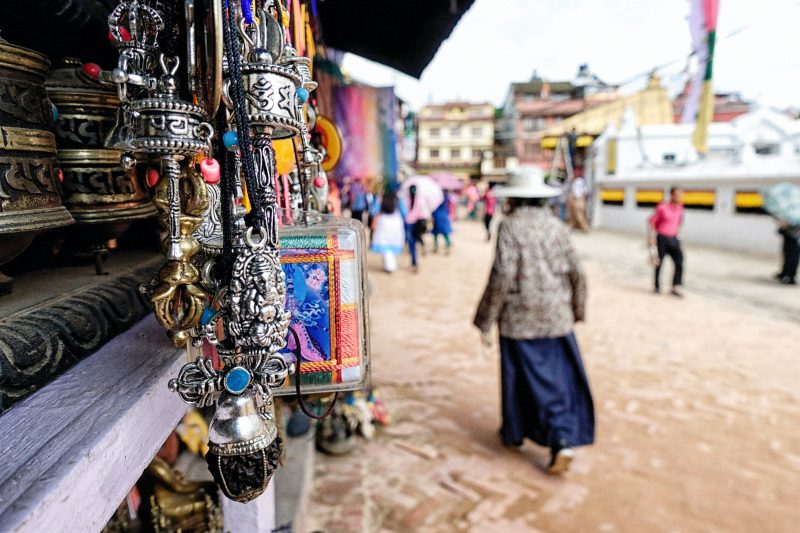
Kathmandu, Nepal
Namche Bazaar is the unofficial capital of Nepal with the Sherpa community occupying the majority of the settlement. This village is a major hotspot for trekkers as this is usually the trekking point where explorers spend a day or two here to get acclimatized and avoid altitude sickness or acute mountain sickness. They also have some cool cages, bakeries, and museums for you to wander around and quench your curiosity.
During your acclimatization rest days, you also get to explore the nearby Sherpa villages and monasteries. After resting and spending some quality time in Namche and the surrounding villages, you can take 8 to 10 days to reach the Everest base camp depending on your trekking speed.
Something Extra: Do you know plane schedules are highly susceptible to high wind and cloud coverage for the Lukla airport? So, it is always recommended to keep a buffer of a few days in the schedule, just in case the weather decides to give you a hard time!
How difficult is the Everest Base Camp Trek?
“Mountains make you feel small and grounded. Trust me. Everest base camp trek is a challenging trek and one needs to be mentally and physically adaptable for nay certainty.”, Ritika remembers.
One very interesting thing about trekking questions is that it completely depends on the person who is answering them. Not everyone is built the same and not everyone has the same fitness level.
Everest Base Camp trek starts from Lukla which is at an altitude of above 3000m and usually ends on Kala Pattar which is at an elevation of 5500m. The difficulty in trekking EBC is thus mainly attributed to high altitude and the duration it takes to complete the trek.
The total distance it takes for the Everest base camp trek is 130 km(up and down). This can sound quite daunting when you hear it for the first time but usually, in most cases, out of the 14-15 days, you will be trekking for only 9-10 days based on your pace and the rest the other 5 days.
A trekking schedule of fewer than 12 days would not be ideal for someone who is not very proficient in trekking and would make you sick. This is because you need time to get your body acclimatized to the altitude or it can make you ill.
Even though the distance and days for the trek seem a bit huge as compared to other treks, on average you would be trekking for only 5 hours or less per day during the EBC trek. This is not an impossible achievement if you are determined. This can be achieved by some mental and physical training that can start 6 to 8 weeks before making the trek.
Another interesting fact about the trek is that unlike the Kilimanjaro trek or even the Annapurna circuit trek, the Everest Base Camp trek involves more trekking and less climbing.
The graveled trails are pretty zig-zag which makes the trekkers feel like they are making a long hike as compared to climbing the base camp of the world’s highest mountain. You need not be a super fit person to make the trek but rather someone who is well aware of what they are getting into and is determined to make it successfully till the end.
In a sentence, it is not going to be the easiest trek you have made but with a little effort, it is not going to be the most difficult trek of your life either. Remember, the best views come after the hardest climb.
Something Extra: Not just for the EBC trek, but for all adventure activities in the world, the most important thing is to be self-aware. No one knows you better than you. So, pace your activities accordingly. As for the Everest Base Camp trek, it is not the destination but the journey that makes all the difference.
What is the cost of Everest Base Camp Trek: Costs + Tips
Everest base camp trek is one of the most sought-after treks by mountaineers across the globe. One thing that has the potential to pause the EBC trekking adventurers of many is the concern for the Everest Base Camp trek costs. So here is our way of explaining to you the Everest base camp trek costs involved, their split-ups, and a few tips to save some money.
- Flights
- Tour/expeditions
- Trekking gear
Flights to Kathmandu (INR 10,000 – INR 30,000)
Your experience would start from the moment you board your flight to Kathmandu. So, it is important to discuss the travel expense to Kathmandu while discussing the Everest Base Camp trek cost.
There are direct flights to Kathmandu from all the major cities in India like Delhi, Mumbai, Bangalore, and Kolkata. The ideal and cost-saving option is to take a flight from Delhi to Kathmandu which can cost around INR 20k depending on the season and the demand. From Kathmandu, your expense would depend on the adventure group that is organizing your Everest Base Camp trek.
Tour guide & expeditions related costs (INR 50,000 – INR 80,000)
To give you a complete picture of the Everest base camp trek, it usually involves a 12-15 day trekking period with 15 days and 14 nights spent during the trekking. The bulk (80% – 90%) of the Everest base camp trek costs would be owned by the trekking cost you have to pay to the trekking company or adventure group organizing the trek.
Ideally, they would be in charge of your complete trekking necessities from Lukla to EBC and back to Lukla. You would also have a trek leader who will guide you throughout the trek.
The facilities may involve domestic flights from Kathmandu to Lukla, accommodations, and stay during the trekking including the tea houses and lodges, necessary National park permits for entering the national park, professional trekking guide, porters and yaks to carry your luggage, and trekking costs depending on the organizer and the package you are choosing.
Normally the Everest Base Camp trek costs would include INR 50,000 to INR 80,000 for the trekking company. Anything outside the package like extra stays, shopping, or wandering the picturesque villages and access to quaint cafes would involve additional expenses from you.
Trekking gear costs(INR 5000 – INR 40,000)
Another expense that you are bound to incur is the cost of your trekking gear. You will have to spend somewhere close to INR 5k-40k on your travel wear, trekking shoes, backpack, trekking pole, and such if you haven’t already had them in your closet. Not to worry, if you invest in some good quality apparel here, it can last for a long time.
Now that you know about the basic costs, here are some tips from Ritika and Himanshu for efficient Everest Base Camp trek costs reduction.
- If you are not an avid trekker and know that Everest Base Camp trek is just a one-time trek to check off of your bucket list, then it is better to rent the gear and apparel from the shops in Kathmandu rather than purchase it. This would be available at a very minimal cost.
- Going in groups can be much cost efficient rather than going solo for the base camp trek.
- Keep your insurance ready before you start your journey as it can go a long way in case of any emergencies.
- Tipping is a big thing with the porters and Sherpas you employ to carry your luggage and guide you through the trek. They expect a tip close to INR 2000, so if you are not familiar with the system or would like to keep things transparent, be sure to let them know beforehand what you would be tipping them to avoid unnecessary arguments.
- As you go up in altitude, everything becomes costlier so be prepared with expensive products and facilities and be prepared for that.
- The wifi and internet may not always be in top shape as you go higher. So do not rely on digital currencies, rather have the Napalese Currency ready with you for transactions, purchases, and tips.
What to Pack: Everest Base Camp Trek Packing List
One of the most important things that a mountaineer has to take care of when trekking is to keep check of his or her luggage and backpack.
Even the fittest climber would find it difficult to hike at an altitude above 5000 meters so imagine doing that with a weight close to 20kg. This is where being smart and choosy when choosing your packing list comes in handy. So, here is how efficiently you can make the Everest Base camp trek packing list.
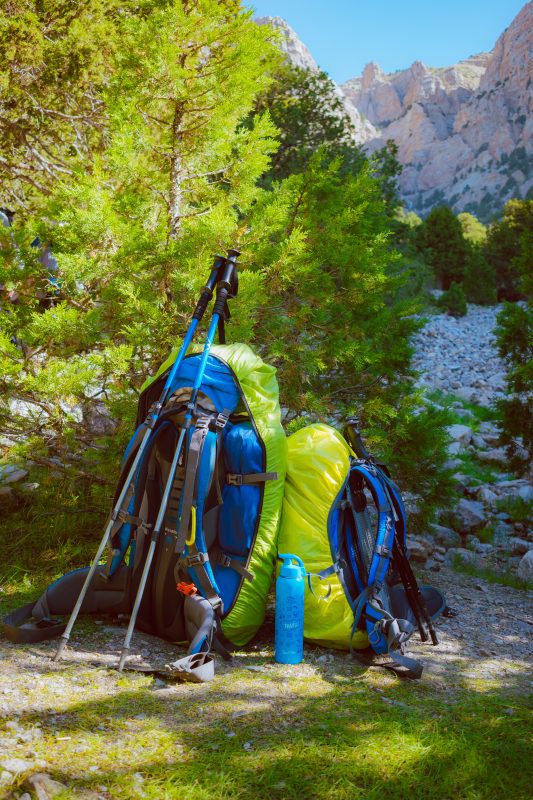
Everest Base Camp Packing
Tips to keep in mind for Everest Base Camp Trek Packing list:
- Keep it light and only bring the very essential things.
- Remember that you are going to have to carry the backpack while trekking, so anything above 20kg would hinder your trekking experience. The smaller the backpack, the better.
- Employ porters for carrying the luggage. They usually carry around 60L -85L of luggage per person.
- Have a daypack and complete luggage. Daypack would contain only the essential items that you would need within your reach when you are making the trek.
- Even though you can store your winter clothes in the complete luggage that you may let the porters transport, accessories like good woolen mufflers, or extra jackets would do well in your daypack. This is because the Everest base camp trek is extremely volatile concerning the weather. It can get wintry cold but at the same time, since you are trekking and exerting your body’s energy, you might also feel a bit sweaty. So keep that in mind while packing your bag.
What goes in for the Everest Base Camp Trek Packing list:
While creating the Everest base camp packing list, let us divide the entire list into two. One would be the day pack, which would carry only the essentials, and then the bigger one which would include everything else.
The entire reason for segmenting the list is to make sure that your trekking experience is not hampered by your huge luggage. This way you can keep your daypack with you while trekking without worrying about where the porter is and how you can get the essentials from them.
So thanks to Himanshu, Abishai, and Ritika, here are our options on what needs to go into the Everest base camp trek packing list.
Essentials:
- Hats/Caps -1 no
As you go higher in the trek, you would be exposed to more sun rays directly and since the chances of you taking the Everest base camp trek is higher in summer, it is always important to carry a hat or cap to protect yourself from the sun.
- Sunglass – 1 no
Just like how you are using a hat or cap to protect your head from the sun rays, it is wise to carry sun shades or sunglasses so that it would not be difficult for you when your eyes are exposed to the blazing sun.
- Sunscreen – 1 full tube
UV rays are very harmful to your body. In mountains, as you climb up, the intensity of the rays go up and can cause sunburn. So carry a higher UV-protected sunscreen lotion that can last for the entire duration of the trek.
- Medical Kit
This is one of the most important articles to be carried in your daypack. If you are a first-timer, make sure that you research well on the altitude, the sickness, the terrain, the climate, and most necessarily know your body’s reaction to certain factors. If you are someone who is under any special medication, do not forget to carry them and let your guides know prior as well. Also, carry regular medicines for flu, regular cold, bandages, pain killers, anti-inflammatory sprays, anti-bacterial creams, and so on. It is common for trekkers to get sick as they gain altitude, and this will only get better as your body gets acclimatized to the surroundings. Your guide or the trekking team would also be carrying an extensive medical kit including oxygen for critical conditions, so you only have to be aware of your body and its reactions.
- Toiletries
All your basic toiletries like your toothpaste, toothbrush, soap, towels, tissues, moisturizers, lip balms, and whatever else you need for your day-to-day use should go in here.
- Water bottle – 1L-2L
Water consumption and staying hydrated are extremely important while trekking. You would be losing moisture from your body continuously when trekking and it is important to regain that moisture content by drinking at least a liter of water during the trek. Carry sustainable water bottles so that you do not leave any trace of litter on the trekking route and spoil nature. There are tea houses and taps on the route for you to refill the bottle as and when required.
- Distill tablets
As you trek higher the altitude, the tea houses, and taps may be a bit scarce so you will have to fill the bottle from the freshwater rivers or glaciers. Even though this is healthy, since it is coming straight from the mountains, it could have the presence of bacterias or microorganisms. That is why it is recommended to carry a distilled tablet to purify the water before you consume it.
- Munchies, Snacks & Electrolytes
If you are someone (like me) who would like to keep their candies and munchies in check, it is advised to carry your brand of munchies and snacks in your daypack. But while carrying it is okay, what you need to remember is whatever you carry to the mountains should be taken back with you.
No wrappers or covers should spoil the pristine natural beauty of the mountains. Also, it is advised to carry electrolytes and snacks that are more of protein bars and less of junk food as this can affect your performance in trekking.
- Headlamp/torch – 1 no
You might not know when you would need a torch or lamp to guide your path, especially since you would be trekking through unknown villages and terrains and camping on village tea houses. If you have a headlamp, it can come in handy when exploring the places.
- Electronic gadgets
Whatever gadgets you need, let it be a phone or batteries or charger or even your iPod to listen to some groovy music, keep it ready in your daypack.
Clothes & Trekking gear for Everest base camp trek packing list:
- Undergarments
When you are trekking, your body will heat up and your clothes can get easily spoiled. With the climate and the activities involved, it is ideal to carry a change of undergarments for each day. Make sure they are practical and comfortable as you would be engaging in adventure activities during these days. You do not want to wear a dirty or uncomfortable undergarment while you are trekking at an altitude above 5000m with no chance to get a new one. So, we suggest spares and according to your personal preferences.
- Thermals – 1-2 pairs
Thermals or base layers are the clothes in the winter layering system that is used to keep your body warm and dry. It is worn closest to your skin and has the primary duty of wicking moisture off your body. During the Everest base camp trek, the temperature can go up to -20 degrees celsius so it is very important to have a warm yet quick dry thermal. At Kosha, we introduce the unique blend of merino wool and bamboo to create thermals that not just protect you from the extreme cold but also help in keeping you dry, odor-free, lightweight, and have antibacterial properties. You should carry a thermal top and bottom to be worn under your clothes during the entire trekking period.
- Midlayer -1 no
Mid Layers are the piece of clothing that is worn over your thermals to keep your body insulated from the temperature. Mid-layers can add that extra layer of warmth that is often required, especially during nights for the trek. Make sure you take something comfortable and can be reused during the 2 week trekking period. Anything like a Supima cotton pullover or a cotton blend hoodie can act as an efficient mid-layer during the trek.
- Lightweight jacket -1 no
Another important layer that you need to add to your Everest base camp trek packing list is a good-quality lightweight jacket. Jackets are the outer layer clothes that are used to protect your body from external factors. While baselayer keeps your body dry and comfortable, mid-layer keeps your body warm and the jackets or hard layer makes sure your body is not affected by wind, snow, or rain. Since the trek is going to take you through a lot of terrains and surroundings, it is preferred to have your hardshell be a multipurpose jacket. This would make sure that you have enough pockets to carry out your trekking knick-knacks and at the same act as complete protection from the external factors.
- Quick-dry TShirts – 2 nos
Keep a change of 2 quick-dry T-shirts that you can wear when the climate is pleasant and you feel like wandering around. It could be the Namche Bazaar of the Tengboche monastery or even some cool bakeries that you found which serve awesome donuts.
- Track pants/joggers – 2 nos
Your bottom wear should be comfortable, quick-dry, and help you trek the terrain with ease. Avoid anything that is too fitting and does not let you breathe. It is also advisable to carry the jogger with a lot of pockets as it can come in handy during the hike.
- Mufflers/Scarves – 1 no
Do not forget to carry your favorite woolen muffler when you are making this climb. The temperature would get quite colder as you move up the trek and you might need a good fluffy muffler to protect your throat and nose from the cold dry wind.
- Beanies – 1 no
Even though you are carrying sun caps and hats, it is always better to carry beanies or woolen caps that can provide warmth to your head and ears when making the Everest base camp trek. It would be better to carry something that offers complete protection to your ears over something that just covers your head like a Russian cap or a monkey cap.
- Gloves – 1-2 pairs
Gloves are very important when you are making the EBC trek as a lot of times your hands would be the exposed area in your body to the cold and you do not want your extremities to be frozen or harmed during the trek. Invest in high-quality gloves, preferably something that has a good grip. This would go a long way not just for this trek but in the future as well.
- Technical socks – 4-5 pairs
Trekking is all about how well your feet can carry you through the trails. This is exactly why there is a lot of emphasis on trekking socks. It is important to carry at least 4-5 pairs of trekking socks. The more technical and warm they are, the better chance of protecting your feet during the hike. The reason that it is given priority over the other accessories in terms of quantity is that your feet do the most work during the trekking time and hence they sweat very frequently. Wearing wet socks can not just spoil your entire trekking experience but also can cause health issues like hypothermia. Kosha’s merino wool technical socks have been a tried and recommended brand in this area.
- Trekking Shoes – 1 pair
Good trekking shoes can either make or break a trek. It is extremely important to invest in trekking shoes that can keep you comfortable and provide you an amazon experience throughout the trek. But one thing to keep in mind while investing in a new pair of trekking shoes is that you need to be careful of the shoe bite especially if you are trying it for the first time during the trek. Ritika has a tip to overcome this. She suggests breaking the shoes a week or two before the actual trek. You can practice hiking in those shoes well before your actual trek so that you are genuinely comfortable. Since trekking shoes are too important for the entire experience we will be discussing in length the different trekking shoes in the next section.
- Trekking Pole – 1 no
A trekking pole is a long piece of stick that assists climbers during the ascend and descend. It is always recommended to get the trekking pole as it can make your trekking experience easier.
One tip that Abishai has for the trekkers is that, even if you forgot some items, Kathmandu has a lot of options for any last-minute items. So, be ready with your basics and even if you miss something, it is possible to get the item from the local markets.
Which shoes are best for Everest Base Camp Trek
“You need special shoes for hiking – and a bit of a special soul as well.” – Terri Guillemets
Trekking shoes play a huge role in the success of a great trekking experience. You cannot use the shoes or boots that you normally use when you are making a trek like the Everest base camp trek.
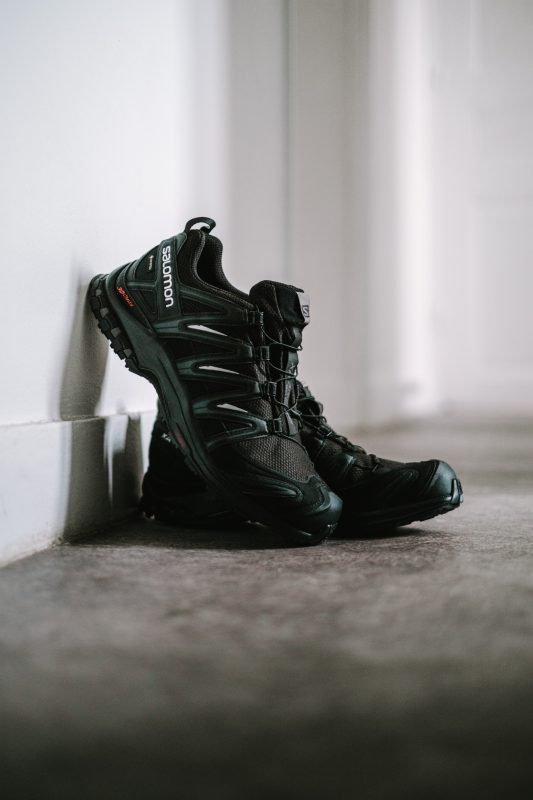
Base Camp Trekking Shoes
You need them specialized for the terrain, weather, and use. Before we reveal our top choices for EBC trekking shoes, here are a few pointers that need to be considered when making the purchase.
- Fit & Comfort
It is very important to check the fit and comfort of your shoes before you tie the knot. You need to feel comfortable in the shoes. Choose a snug fit but not a tight fit.
- Water resistance
For the EBC trek, you would be crossing a lot of ice sprinkled trails and glistening glaciers. So, it is necessary to invest in a waterproof trekking shoe.
- Ankle support
When you are making expeditions or treks that can last for more than a week to 10 days, it is always wise to get boots that support your ankles and cushions your feet rather than the trekking shoe which would not offer support to your feet.
Now that you know what to look out for, here are our top picks for the hiking boots for EBC.
- Salomon Quest 4D
This amazing range of trekking boots is designed to provide technical support and durability throughout your trekking experience. They are waterproof, offer high support for the ankles, and cushions the feet.
Price – ~INR 19,000
- La Sportiva Trango
Trekking boots from Sportiva are flexible, lightweight and the perfect combination of comfort meets purpose. They work well in the rugged plains and help you keep going.
Price – ~INR 18,000
- Merrel Moab 2 Mid
This range of synthetic leather shoes offers extreme comfort and snug fit without costing as much as its competitors.
Price – ~INR 10,000
- Quechua MH100
These budget-friendly trekking shoes by Quechua are one of the best options for moderate Himalayan treks. They offer waterproof and comfort for the trek.
Price – ~INR 4000
How to prepare for a trek – Kosha’s Tips
When one talks about trying the Everest base camp trek, there are many questions about how to prepare for the trek, if it is possible to trek by a nonathletic person and if there are any limitations or tips to be thought of when making the trek.
One thing the three mountaineers strongly felt about trekking was that if one is well researched and prepared, any trek is possible. Preparation is not limited to getting to know about the location, booking the tickets but also about getting the mind and body ready for what it is going to endure during the trek. The focus should be more on endurance rather than strength.
Changes, when exposed to in large quantities, can cause havoc to anyone. Similarly, our body also has a threshold that can handle sudden changes. If you are someone who is not used to any physical activity for years then exposing your body to a 5-hour hike per day can be a bit strenuous.
So it is advised to start your preparation around a month or two before making the actual trek.
Being the Himalayan trek guide for more than half a decade, Himanshu has a well-structured schedule on how to get your body used to the trek. It all starts with making your body active. If you are an athletic or semi-athletic person, being active would be part of your lifestyle but for someone completely new to the adventure explorer world, the first step is to get out and start walking.
You don’t have to walk for 15kms the first day, it’s all about knowing your body’s limits and trying to stretch them. Try to walk for 2 km on the first day and if you can successfully complete it then add 2 more km the next day and by the end of the first week, you would be at a stage wherein you can walk 10kms comfortably at your own pace.
The next week is to perfect the hiking skills and let your muscles get accustomed to them. So if you are from a hilly area try hiking there. If you do not find hike-worthy or steep terrain nearby your area, you can always try climbing the stairs. It is an efficient and easy way to reproduce the climbing experience.
Try climbing at least 10 floors in the first week and then increase the climb by repeating the climb 3 or 4 times across all 10 floors. After 2-3 weeks you should be comfortable climbing 10 floors of the stairs 4 times without significant problems.
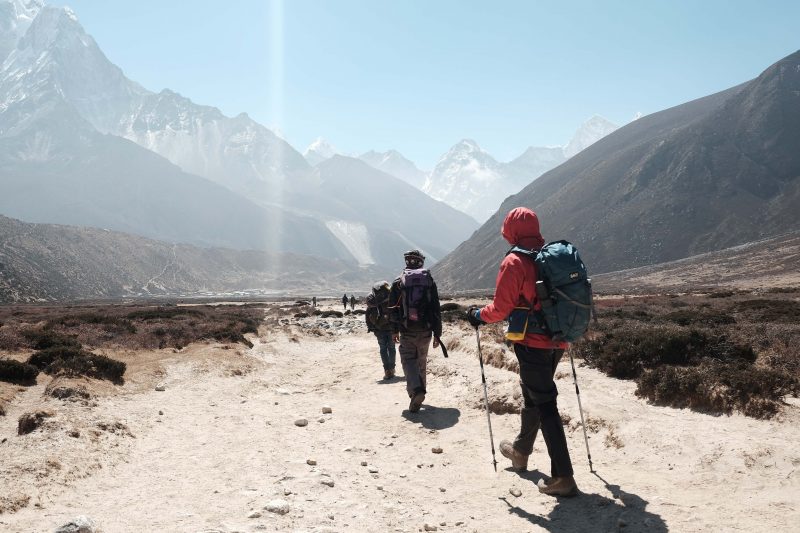
Trekkers
Last week should be concentrated on weight endurance. Since you will have to carry your daypack with you when trekking, it is important to replicate that scenario and prepare your body accordingly.
So, in the final week prepare your body by carrying close to 10kg of luggage on the stairs(10 floors, 4 times). This should give you a general idea of how things are going to be during the trek.
One thing that you cannot replicate is the actual altitude and the difficulties the lack of oxygen can cause. Altitude sickness is very common and when you are trekking with the lack of oxygen it can be pretty hectic. Swimming and breathing exercises in yoga can be very helpful for this according to Himanshu.
A good and complete diet also plays a role in the preparation. Try to add micronutrients, vitamins, minerals, and proteins to your meals at least a month before the trek to get the maximum result. Some trekking groups like Beyond the Wall, offer a complete dietary plan and exercise plan for the trekkers before they start the climb. If you want to get a complete idea, you can check them out here.
With regards to the clothing, try to include weatherproof layers in your travel kit. Depending on when you are making the trek you are bound to experience snow or rain. So adding rainwear to your Everest Base camp trek packing list could be beneficial in this regard.
Try to go for environment-friendly products that are as harmless to the globe as possible. Kosha’s scientific winter layering system offers winter layers for trekking that are completely sustainable. All the thermals are made from the unique blend of merino wool and bamboo which is acquired ethically. Mid-layers are made of pure cotton or cotton blend and no animals are harmed for the making of Kosha hard layers.
Another thing to be prepared for is your money, ID cards, permits, and travel insurance. Having medical insurance is compulsory with some trekking companies. When you are carrying money, carry it as cash well because many places may not have access to ATMs. Also, under the current circumstances learn more about the covid protocol in the region and make sure that your travel does not break any laws.
How to plan an Everest Base Camp Trek?
Everest base camp trek is a very unique trek that is on the bucket list of almost all mountaineers. There are different ways to go about it. Here is a step-by-step on how you can make your next Everest base camp trek dream come true.
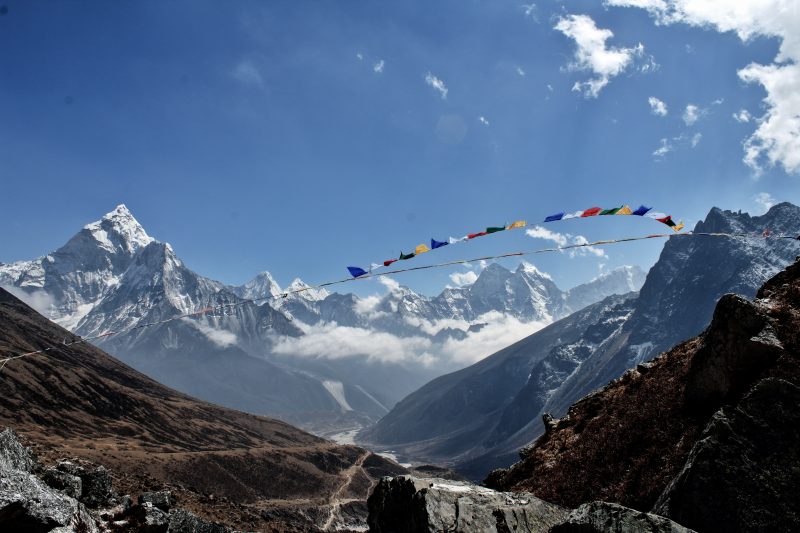
EBC Trek
Step 1: When are you going?
It’s all about the dates. Think of when exactly would it be a convenient time for you to make the trek. The ideal time for Everest base camp trek March-May and Sept-Nov, ie., pre and post-monsoon.
Between December and February, the paths would be closed due to heavy snowfall. So think of all your arrangements and decide when exactly it is you want to visit the abode of clouds.
Step 2: How are you going?
How or who are you going with? Do you have a tribe that shares similar enthusiasm about the Everest base camp trek? According to Ritika that is the best way to trek the mountains. She remembers how her bond with her friends grew after the trek. If so, get on a video call and discuss.
If you are a lone wolf you can skip this step but if you are considerate about the Everest base camp trek costs, then you might have to find a buddy as the trekking cost is much lower when you are traveling as a team.
Step 3: Who is your guide?
It is always recommended that you organize your Himalayan trek with a certified trekking or adventure company. This would not just make your trekking way easier but would also be safe and more structured.
They would have a clear itinerary on how things are arranged across the days and you will have the flexibility to choose a package that you want. Trekhimalayas, Beyondthewalls, and BikeAdventures offer some great Everest base camp trek packages depending on your needs. If you are looking for a bit more challenging adventure you can also choose the EBC trek via the Gokyo Ri trail by Indiahikes.
Please check out a sample 14-days Everest base itinerary below.
Step 4: Do it now!
Now that you know what to do, what are you waiting for? Make your plans and get, set go!
Sample Itinerary – 2-week trek
A sample camp trek itinerary of your day would look something like this, for a 14-15 day trek.
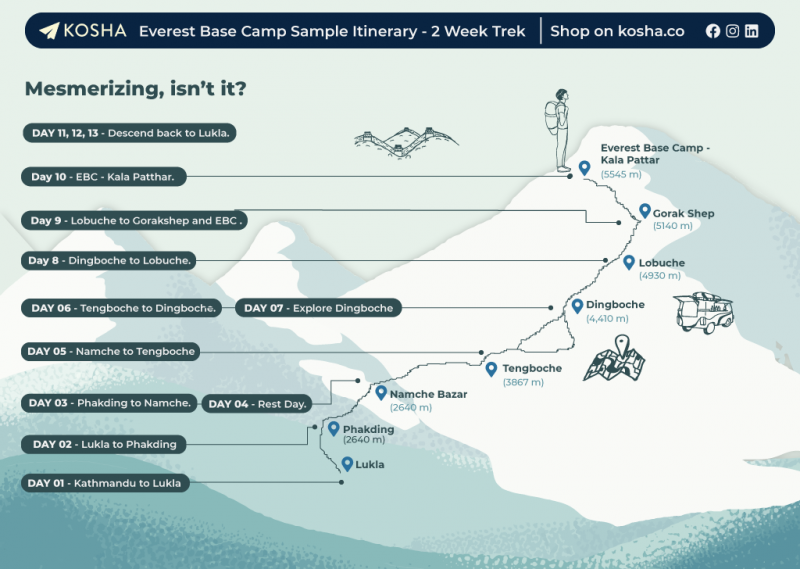
14 Day Everest Base Itinerary
Day 1
You would be picked up from Kathmandu Tribhuvan International Airport by the trekking company and taken to Lukla after the brief orientation on what is expected and what is not.
Day 2
On day 2, you will fly to Lukla and your trek starts from Lukla to Phakding. This would be a relatively relaxing experience with not many hikes.
Day 3
Day 3 will have you trek from Phakding to Namche. You will cross the suspension bridge over the sparkling Imja Khola River which is a tributary of Dudh Kosi River. Your trekking permit and details would be verified here.
Day 4
Day 4 is the rest day. You will have the day off to get acclimatized to the altitude, weather, and culture. Namche is the Sherpa capital, so you can wander around the village, get to know more about the local traditions, and try the cuisines.
Day 5
Day 5 is when you would be starting the hike after getting acclimatized. You will trek from Namche to Tengboche and can be a bit strenuous. You can visit the beautiful Buddhist monastery and enjoy nature.
Day 6
On day 6 you will hike to Dingboche. This would be an uphill trek through the alpine forests and lovely mountain views.
Day 7
You will take a day’s rest and explore Dingboche and the surrounding on day 7. It is beautiful and lush and has a breathtaking view.
Day 8
Day 8 will have you trek from Dingboche to Lobuche. This walk is very pleasant and takes you to Pheriche village.
Day 9
Day 9 is when you trek to Gorakshep and EBC and back to Gorak Shep. EBC is a point that marks the base camp. This is a steep climb so you have to be very careful.
Day 10
Trek to EBC is not complete without taking the breathtaking view of Mt Everest and Khumbu Glacier from Kala Patthar. This is what you will do one day 10.
Day 11, 12 & 13
You will descend back to Lukla on days 11 and 12. You will say goodbye to Lukla and fly back to Kathmandu with beautiful memories on Day 13.
Mesmerizing, isn’t it?
Frequently Asked Questions: Everest Base Camp Trek Tips
Here are some frequently asked questions on the Everest base camp trek and our attempt at answering these questions for you.
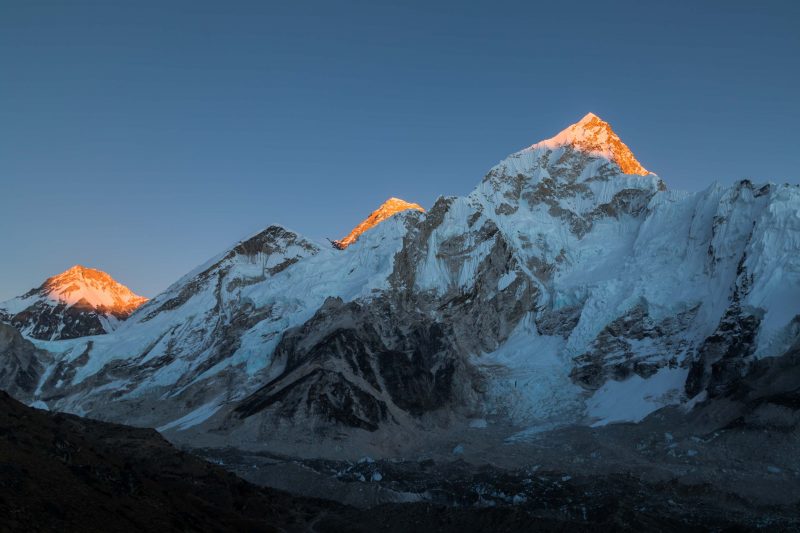
Mt Everest
Is the Everest Base Camp Trek easy?
“The way to Everest is not a Yellow Brick Road.” Krakauer
You are talking about trekking the base camp of the tallest mountain in the world. It would not be the easiest of the treks but it is not an impossible one either. The thing about difficulty level is that it varies from each person and often what we think is difficult or not achievable is not that bad. It all depends on the effort and preparation you are going to put into to achieve your dream of conquering the trek.
You will need a slow and study routine set up ideally 4-6 weeks before making the trek to have a smooth experience. If you are physically and mentally ready for the trek, half of the job is done. Being prepared makes things much easier. Unlike Kilimanjaro or Annapurna base camp, trek to EBC is more of walking and less of climbing. So, if you put your mind to it, you can have an enjoyable trekking experience.
In Abishai’s words “When you are going to EBC from Lukla don’t push yourself against the altitude, plan buffer days in between that you can use if you don’t feel good,
go as slow as you can on the way up, on the way back if you want you can even run right from EBC to Lukla if you can“.
Which is the best trek company for Everest Base Camp?
Many trekking companies provide excellent Himalayan trekking services. Indiahikes, Trekhimalayas, Beyondthewalls, and BikeAdventures are some of the few. These are companies that provide professional EBC trekking services in the range of INR 50k-80k. All the companies are different and their offerings also vary significantly.
It is advised for you to visit their website pages, go through their offerings, read more about how they carry out the trek, and then choose one. What you find attractive in a program may not be attractive to someone else as your interests differ from person to person.
So, if you are going as a group, discuss with your team and finalize one company that satisfies most of your needs.
How long does Everest Base Camp Trek take?
It usually takes close to 10-15 days to make the trek. The ideal is to have 12 days to make the ascent from Lukla and 2 days to reach back to Lukla. It is not advised to carry out the trek in less than 12 days unless you are a professional mountain climber and frequently trek the Himalayas.
The steady pace it takes for your body to adjust to the trek, the altitude, and the weather makes the experience more enjoyable. If you rush it, you may lose all the fun in that. Better to take it slow and enjoy the journey rather than racing to the destination.
How crowded is the Everest Base Camp Trek?
Everest base camp trek is a pretty popular trekking trail and a favorite of all mountain climbers. Almost everyone who visits Nepal for the Himalayan trekking experience would either want to try EBC or the Annapurna base camp.
The trail is crowded usually during October- November, and April-May. These are the peak seasons. If you want to get the full EBC experience, this would undoubtedly be the best time to explore. If you want a bit quieter, then you can try before Autumn, preferably early August.
Is the Everest Base Camp Trek worth it?
Do you know only 800 people try to climb Mt Everest every year out of all the billion people in the world? Around 40k people try to climb Everest base camp every year though.
There is a reason why more people are flocking through to the EBC trek without worrying about the difficulty level, it is because of how life-changing the trek can be. You will never be ready to let go of the snowy white glaciers, fresh alpine forests, green and lush farmlands, the eco of mountain wind, and the Buddhist chanting reverberating across the distance.
Once you have heard the calling of the mountains, it is very difficult to go back to the old life. Once you have experienced the Everest base camp trek, you will continue to explore more.
Is the trek tough? Maybe.
Is it tiring? Definitely.
Is it lengthy? So much.
Is it worth it? Absolutely!
In Ritika’s words “For a change, let the valley dominate you, play by its rules and it will be worth it at the end”
